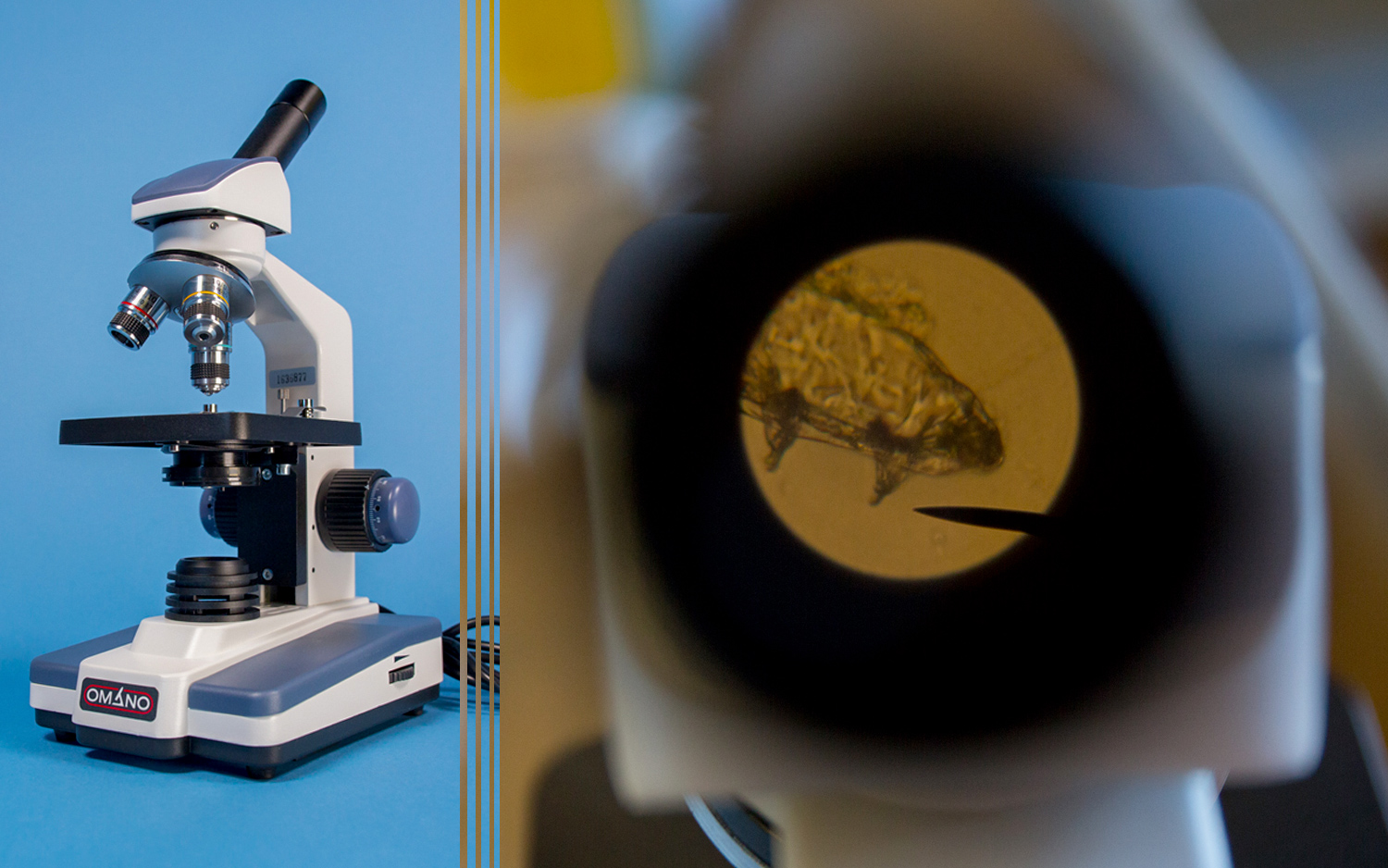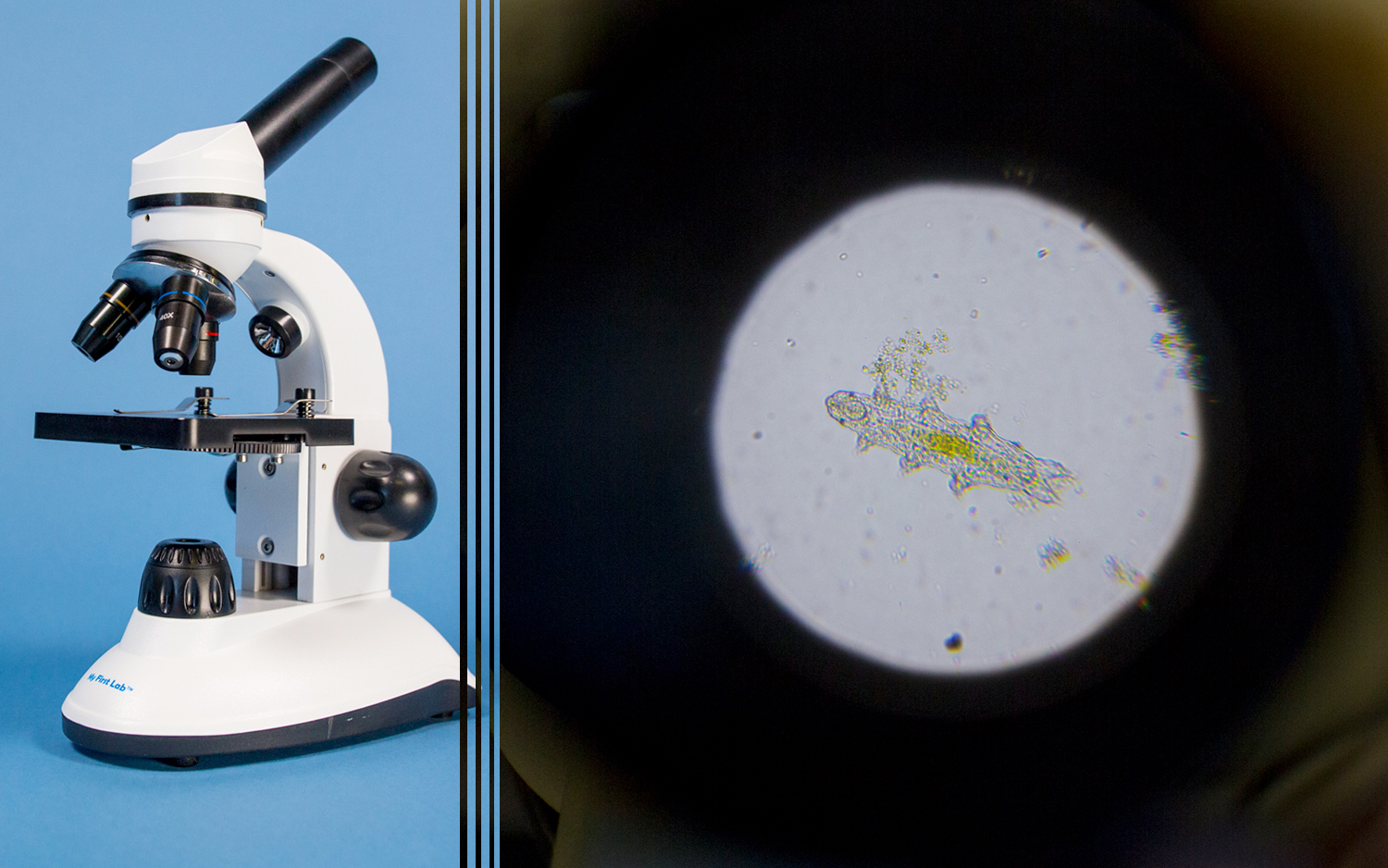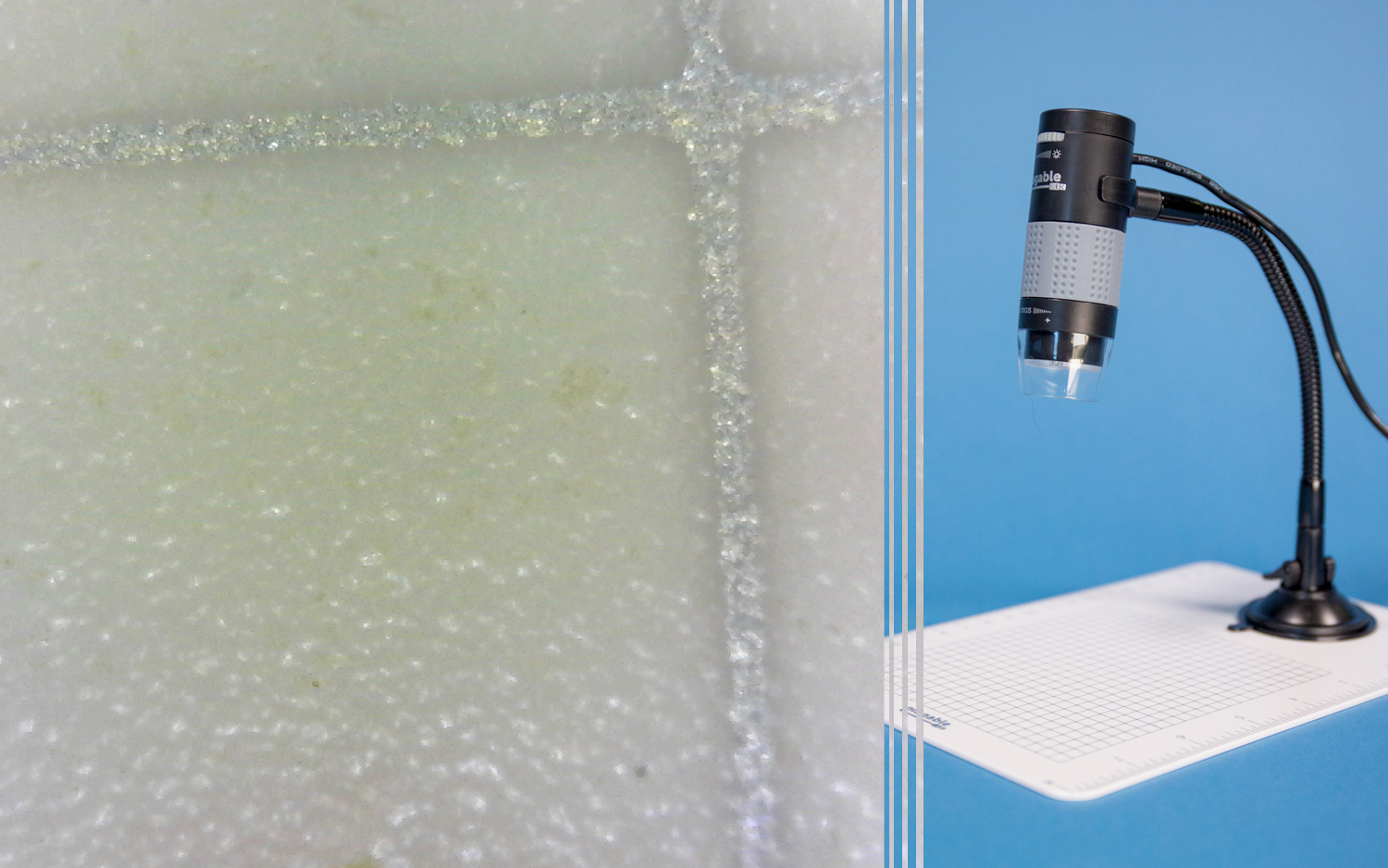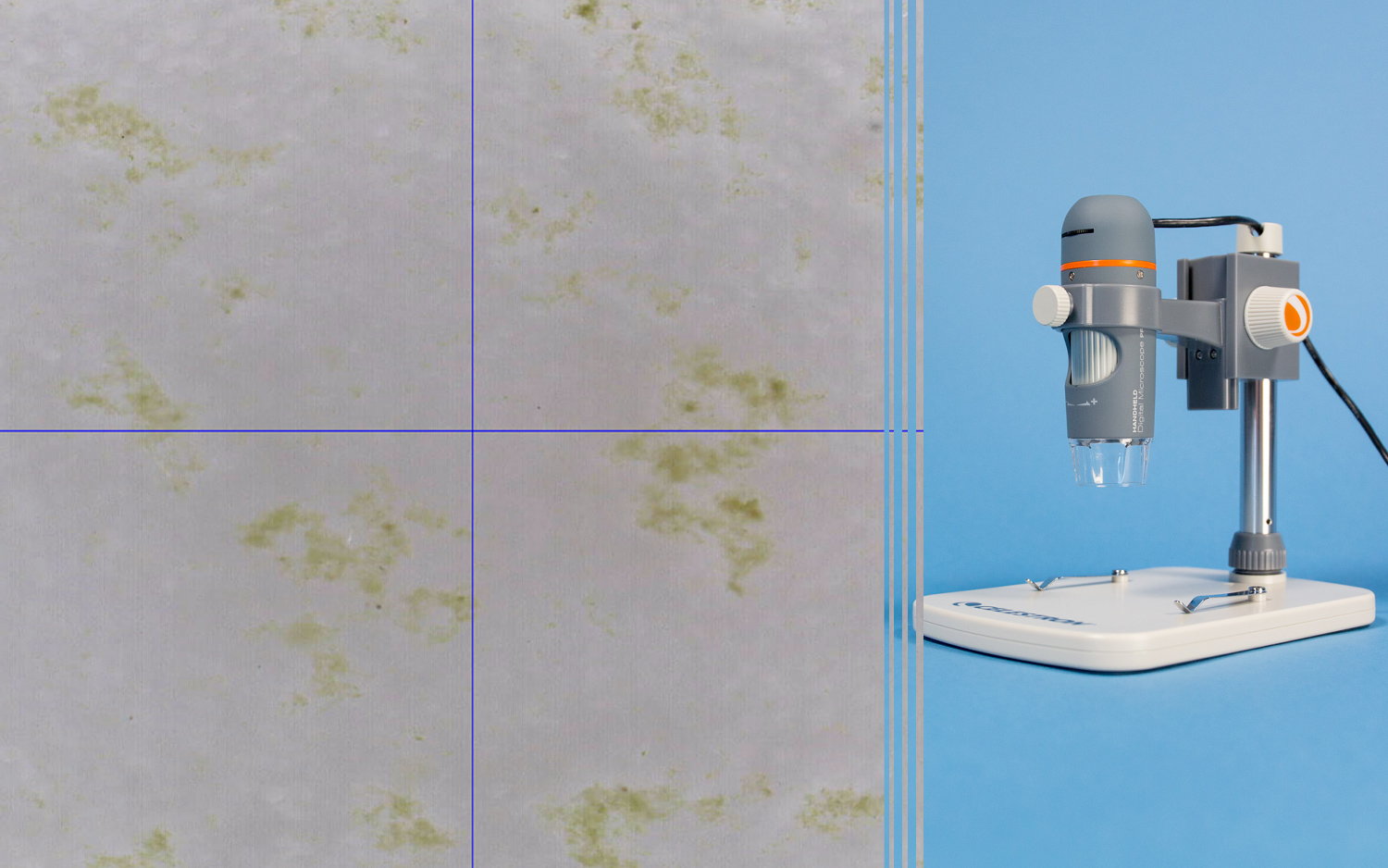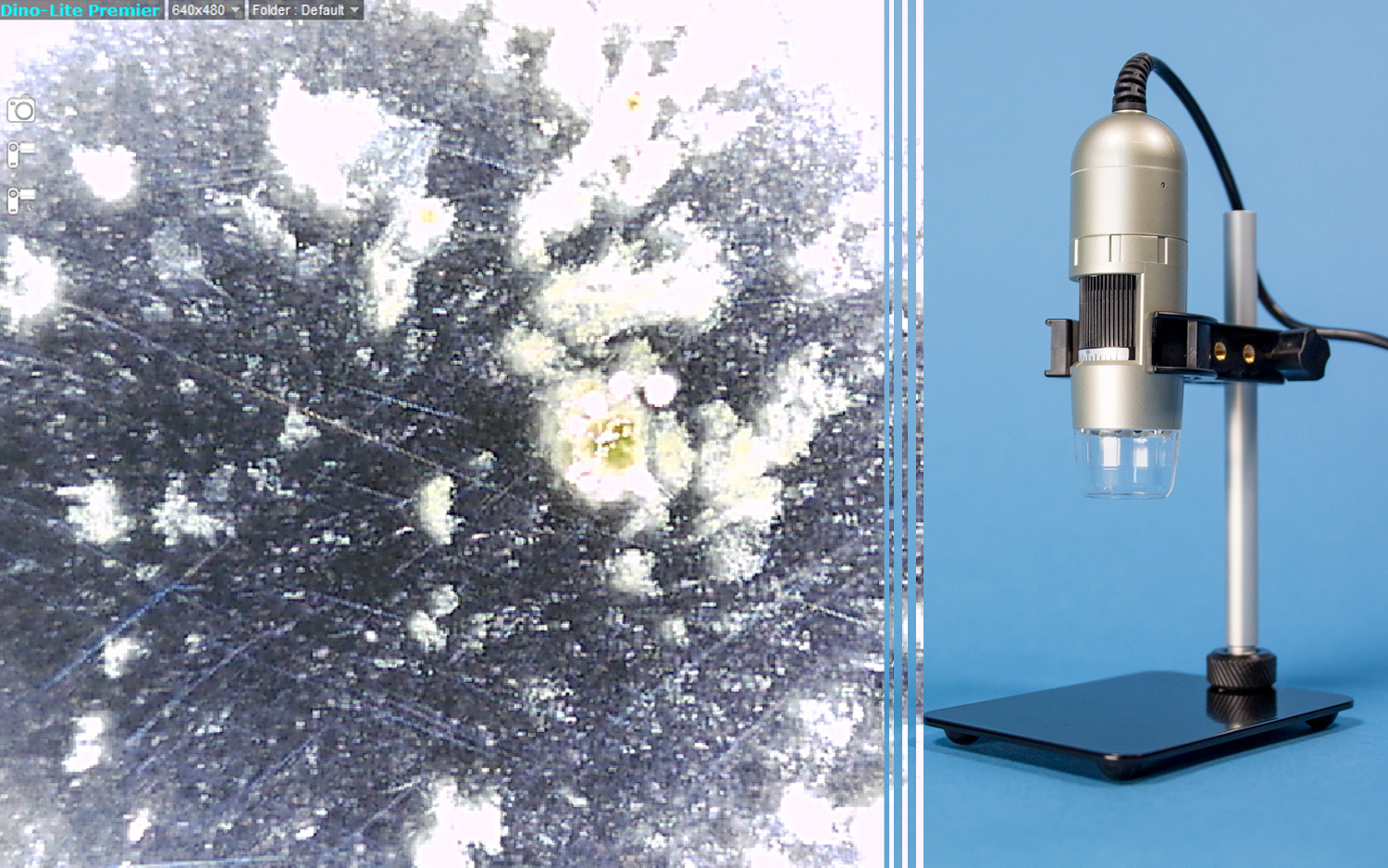Yes, You Can See Tardigrades with a Cheap Optical Microscope

Here at Live Science, our top choice for "cute animal" is the roly-poly and nearly indestructible tardigrade. Yep, we're talking about the water bear, the microscopic organism that looks more like an alien caterpillar than an Earthly animal when viewed up close.
Plenty of gorgeous shots of the tiny creatures online show their segmented, pudgy bodies; their eight legs tipped with claws; and their circular mouths in all their glory. But those images are generally shot through high-powered and advanced microscopes, and sometimes, they're even touched up afterward. That got us wondering whether an inexpensive, off-the-shelf microscope you may have used as a kid in biology class would do the trick.
What if we went out and grabbed some tardigrades and popped the little, squirming bodies under a microscope lens? Well, that's just what we did. At first, we planned to go out to a backyard and collect them from the grass and dirt; apparently, they thrive in just about any environmental conditions. But to ensure they had all their legs and other body parts, we went with "store-bought" specimens. [Here's a look at what we learned about each microscope's pros and cons while using them to look at tardigrades.]
If you're interested in doing the same, you can buy live tardigrades from Carolina Biological Supply Co.
Overall, we found that the digital microscopes are completely unsuitable for looking at things as small as tardigrades, which grow to be no longer than a millimeter, or about the thickness of a credit card. The nondigital optical microscopes, however, produced some amazing tardigrade images.
Let's have a look under the lens:
Get the world’s most fascinating discoveries delivered straight to your inbox.
Traditional microscopes
Omano Monocular Compound Microscope
In this image snapped through the lens of the Omano, you can see a couple of the tardigrade's legs and it's "face," with its tubular mouth. If you could dive even closer to its mouth, you'd see a telescoping structure and a whirl of teeth for grabbing food. Some tardigrade species feast on leafy foods like algae, while others are carnivores and devour meaty snacks that are smaller than themselves — such as rotifers.
My First Lab Duo Scope
What a cutie! But what's up with those teensy bubble-like structures inside its gut? Turns out, they aren't eggs (though we do have a photo of a pregnant tardigrade.) They're called coelomocytes, according to Paul Bartels, a professor of biology at Warren Wilson College in Asheville, North Carolina. "These are large cells that move freely in the body cavity," he told Live Science. "They are used for energy storage — those with more seem to survive cryptobiosis [a dormant-like state during harsh conditions] better than those with few."
AmScope Kids
This seemingly benign blob under the AmScope lens could likely survive being completed toasted and dried out and even being hit by a nuclear disaster and even worse. Research out in 2017 revealed one secret to their superpowers: They have a special protein that forms glass-like structures to preserve dessicated cells.
Digital microscopes
Because of the way these digital microscopes are constructed, with the lights and the plastic cap on the front of the scope, you are extremely limited in how close you can get to items being viewed. That means the tardigrades are probably always too far away from the lens to allow the necessary magnification. In our testing, we never saw any tardigrades with any of the digital microscopes, even when we knew for sure they were there.
Plugable USB 2.0 Digital Microscope with Flexible Arm
Not much to see here. The tardigrade never came into view with this microscope. Here's a fun (and gross) fact about this creature we can't see through the Plugable 2.0: It takes huge poops. Back in May, a Harvard graduate and biologist posted a video on Twitter showing a tardigrade with a dark mass about a third the lenght of its body inside its belly ... just before it expels the giant poop.
Celestron 5 MP Handheld Digital Microscope Pro
Our tries at seeing the tardigrade through the Celestron lens were also in vain.
Dino-Lite USB Handheld Digital Microscope
Though the Dino-Lite and the other digital microscopes failed to reveal our favorite mini beast, the microscopes are still useful. Check out what we learned from working with all of the microscopes on our Best Microscopes for Kids page.
Original article on Live Science.
Jeanna Bryner is managing editor of Scientific American. Previously she was editor in chief of Live Science and, prior to that, an editor at Scholastic's Science World magazine. Bryner has an English degree from Salisbury University, a master's degree in biogeochemistry and environmental sciences from the University of Maryland and a graduate science journalism degree from New York University. She has worked as a biologist in Florida, where she monitored wetlands and did field surveys for endangered species, including the gorgeous Florida Scrub Jay. She also received an ocean sciences journalism fellowship from the Woods Hole Oceanographic Institution. She is a firm believer that science is for everyone and that just about everything can be viewed through the lens of science.


